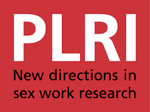Article in Interface: a journal for and about social movements, Volume 3(2): 271 – 287 (November 2011).
Despite the massive achievements of the Prostitutes Collective of Victoria and the historic significance of this important organisation, sex workers as a community and the funds we had attracted drew an unhealthy level of interest from the health and community sector, stemming from a perception that sex workers were politically unable to run their own collective, and that the funds we had lobbied for could be better spent by people who were not sex workers.
Despite research suggesting that legal sex work is safe and that emotional risks and social stigma are of greater concern than health risks, much research on sex work has focused on health risks. Given the legalisation of sex work in Victoria, Australia, it is timely to look beyond health. Three focus groups were conducted with a total of 14 female sex workers on their experience of legal sex work, both positive and negative, and the social acceptability of their profession. Thematic analysis was used to identify the key ways that sex workers described sex work.
This is a clear article that outlines debates around feminism and sex work by Australian activist Kate Holden.

Destination countries for human trafficking are obliged to protect and assist victims of trafficking. This includes providing trafficked persons with protection of privacy and identity, measures for ‘physical, psychological and social recovery of victims’, and their physical safety. They should also provide effective remedies for trafficked persons, such as compensation, and restitution. Are destination States meeting these responsibilities in the 21st century?
An article in Meanjin, Vol. 70, No. 1, Autumn 2011: 46-54.
The history of sex work and sex workers in Australia is discussed, highlighting that they exhibit a specific brand of feminism in choosing to adopt the profession. The professionally structured procedures of services rendered at several licensed sex parlours in Australia are listed, acknowledging sex workers’ desire for their profession to be treated as any other.
Article by Julia Medew in The Age, May 31, 2011.
Health Minister David Davis has backed down from a plan for Victorian sex workers to have fewer tests for sexually transmitted infections, prompting sharp criticism from public health experts who say the plan should go ahead.
Last week, a Department of Health project officer told a health and sex work conference the government had approved a move from monthly to three-monthly tests for sex workers in the regulated industry from September.
Excllent 1998 article by Dr Alison Murray who was one of the first sex workers to recognise the rise of the myths and flawed discourse of trafficking as a potent threat to sex workers human rights.
This radio programme looks back on the 1989 case of Sharleen Spiteri, the first HIV positive sex worker in Australia to be detained in Australia to prevent her infecting clients. Sharleen spent much of the remaining 16 years of her life under 24-hour supervision by health workers, including sex workers employed as peer educators. She became the states’ most expensive public patient in history. The case raises a range of ethical, legal and human rights issues that remain relevant beyond Australia until today.
This paper examines the position of prostitutes (and of ex-prostitutes and women seen to behave ‘like prostitutes’) in reported rape trials in Britain, Australia and Canada over the last 150 years. It suggests sex workers suffer a high incidence of sexual assault and asserts that until recently, it was almost impossible for sex workers to seek justice for these crimes. Charges of rape made by sex workers were often not taken seriously by the police and courts.

